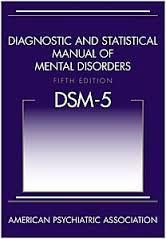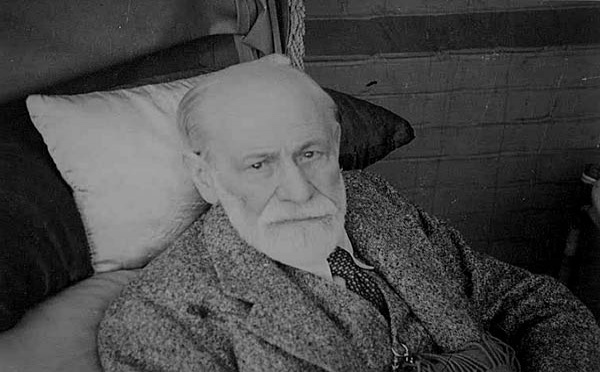
Le responsable de l’édition précédente, Allen Frances, qualifie le projet de « désastre absolu », susceptible d’amener la psychiatrie «au bord du gouffre». Tandis qu’une «lettre ouverte au DSM-5», suivie d’une pétition, circule sur la Toile et a déjà recueilli près de 5000 signatures (lire ci-dessous).
C’est « un événement majeur », explique le psychologue genevois Martial Van der Linden, qui relaie la pétition en terre francophone: «Tant que les contestataires étaient des psychanalystes lacaniens, la portée de la remise en cause était limitée. Mais, cette fois, la révolte est issue du cœur même du système.» La pétition émane en effet d’une large palette de membres de l’Association américaine de psychologie, elle-même représentée dans le cénacle d’experts présidant au DSM-5.
Bertrand Kiefer, rédacteur en chef de la Revue médicale suisse : « Nous vivons une époque où le discours normatif, après avoir été porté largement par la morale ou la religion, l’est par la médecine. Or le DSM, dont la démarche est beaucoup moins scientifique qu’elle n’en a l’air, produit une norme qui est celle de la société américaine. Les pétitionnaires ont le mérite de rappeler ce qu’il feint d’oublier, que la souffrance psychique est inséparable de l’état de la société.»
A la suite, un « Comité International de Réaction au DSM-5 » a été récemment créé. Son but est de promouvoir une prise de conscience des problèmes posés par le DSM-5 et d’alerter les professionnels et le grand public des dangers de ce manuel.
LE TEXTE DE LA PÉTITION :
To the DSM-5 Task Force and the American Psychiatric Association:
As you are aware, the DSM is a central component of the research, education, and practice of most licensed psychologists in the United States. Psychologists are not only consumers and utilizers of the manual, but we are also producers of seminal research on DSM-defined disorder categories and their empirical correlates. Practicing psychologists in both private and public service utilize the DSM to conceptualize, communicate, and support their clinical work.
For these reasons, we believe that the development and revision of DSM diagnoses should include the contribution of psychologists, not only as select individuals on a committee, but as a professional community. We have therefore decided to offer the below response to DSM-5 development. This document was composed in recognition of, and with sensitivity to, the longstanding and congenial relationship between American psychologists and our psychiatrist colleagues.
Overview
Though we admire various efforts of the DSM-5 Task Force, especially efforts to update the manual according to new empirical research, we have substantial reservations about a number of the proposed changes that are presented on www.dsm5.org. As we will detail below, we are concerned about the lowering of diagnostic thresholds for multiple disorder categories, about the introduction of disorders that may lead to inappropriate medical treatment of vulnerable populations, and about specific proposals that appear to lack empirical grounding. In addition, we question proposed changes to the definition(s) of mental disorder that deemphasize sociocultural variation while placing more emphasis on biological theory. In light of the growing empirical evidence that neurobiology does not fully account for the emergence of mental distress, as well as new longitudinal studies revealing long-term hazards of standard neurobiological (psychotropic) treatment, we believe that these changes pose substantial risks to patients/clients, practitioners, and the mental health professions in general.
Given the changes currently taking place in the profession and science of psychiatry, as well as the developing empirical landscape from which psychiatric knowledge is drawn, we believe that it is important to make our opinions known at this particular historical moment. As stated at the conclusion of this letter, we believe that it is time for psychiatry and psychology collaboratively to explore the possibility of developing an alternative approach to the conceptualization of emotional distress. We believe that the risks posed by DSM-5, as outlined below, only highlight the need for a descriptive and empirical approach that is unencumbered by previous deductive and theoretical models.
In more detail, our response to DSM-5 is as follows:
Advances Made by the DSM-5 Task Force
We applaud certain efforts of the DSM-5 Task Force, most notably efforts to resolve the widening gap between the current manual and the growing body of scientific knowledge on psychological distress. In particular, we appreciate the efforts of the Task Force to address limitations to the validity of the current categorical system, including the high rates of comorbidity and Not Otherwise Specified (NOS) diagnoses, as well as the taxonomic failure to establish ‘zones of rarity’ between purported disorder entities (Kendell & Jablensky, 2003). We agree with the APA/DSM-5 Task Force statement that, from a systemic perspective,
"The DSM-III categorical diagnoses with operational criteria were a major advance for our field, but they are now holding us back because the system has not kept up with current thinking. Clinicians complain that the current DSM-IV system poorly reflects the clinical realities of their patients. Researchers are skeptical that the existing DSM categories represent a valid basis for scientific investigations, and accumulating evidence supports this skepticism." (Schatzberg, Scully, Kupfer, & Regier, 2009)
As researchers and clinicians, we appreciate the attempt to address these problems. However, we have serious reservations about the proposed means for doing so. Again, we are concerned about the potential consequences of the new manual for patients and consumers; for psychiatrists, psychologists, and other practitioners; and for forensics, health insurance practice, and public policy. Our specific reservations are as follows:
Lowering of Diagnostic Thresholds
The proposal to lower diagnostic thresholds is scientifically premature and holds numerous risks. Diagnostic sensitivity is particularly important given the established limitations and side-effects of popular antipsychotic medications. Increasing the number of people who qualify for a diagnosis may lead to excessive medicalization and stigmatization of transitive, even normative distress. As suggested by the Chair of DSM-IV Task Force Allen Frances (2010), among others, the lowering of diagnostic thresholds poses the epidemiological risk of triggering false-positive epidemics.
We are particularly concerned about:
· “Attenuated Psychosis Syndrome,”[1] which describes experiences common in the general population, and which was developed from a “risk” concept with strikingly low predictive validity for conversion to full psychosis.
· The proposed removal of Major Depressive Disorder’s[2] bereavement exclusion, which currently prevents the pathologization of grief, a normal life process.
· The reduction in the number of criteria necessary for the diagnosis of Attention Deficit Disorder,[3] a diagnosis that is already subject to epidemiological inflation.
· The reduction in symptomatic duration and the number of necessary criteria for the diagnosis of Generalized Anxiety Disorder.[4]
Though we also have faith in the perspicacity of clinicians, we believe that expertise in clinical decision-making is not ubiquitous amongst practitioners and, more importantly, cannot prevent epidemiological trends that arise from societal and institutional processes. We believe that the protection of society, including the prevention of false epidemics, should be prioritized above nomenclatural exploration.
Vulnerable Populations
We are also gravely concerned about the introduction of disorder categories that risk misuse in particularly vulnerable populations. For example, Mild Neurocognitive Disorder[5] might be diagnosed in elderly with expected cognitive decline, especially in memory functions. Additionally, children and adolescents will be particularly susceptible to receiving a diagnosis of Disruptive Mood Dysregulation Disorder[6] or Attenuated Psychosis Syndrome. Neither of these newly proposed disorders have a solid basis in the clinical research literature, and both may result in treatment with neuroleptics, which, as growing evidence suggests, have particularly dangerous side-effects (see below)—as well as a history of inappropriate prescriptions to vulnerable populations, such as children and the elderly
Sociocultural Variation
The DSM-5 has proposed to change the Definition of a Mental Disorder such that DSM-IV’s Feature E: “Neither deviant behavior (e.g., political, religious, or sexual) nor conflicts that are primarily between the individual and society are mental disorders unless the deviance or conflict is a symptom of a dysfunction in the individual,”[7] will instead read “[A mental disorder is a behavioral or psychological syndrome or pattern] [t]hat is not primarily a result of social deviance or conflicts with society.”[8] The latter version fails to explicitly state that deviant behavior and primary conflicts between the individual and society are not mental disorders. Instead, the new proposal focuses on whether mental disorder is a “result” of deviance/social conflicts. Taken literally, DSM-5’s version suggests that mental disorder may be the result of these factors so long as they are not “primarily” the cause. In other words, this change will require the clinician to draw on subjective etiological theory to make a judgment about the cause of presenting problems. It will further require the clinician to make a hierarchical decision about the primacy of these causal factors, which will then (partially) determine whether mental disorder is said to be present. Given lack of consensus as to the “primary” causes of mental distress, this proposed change may result in the labeling of sociopolitical deviance as mental disorder.
Revisions to Existing Disorder Groupings
Several new proposals with little empirical basis also warrant hesitation:
· As mentioned above, Attenuated Psychosis Syndrome[9] and Disruptive Mood Dysregulation Disorder (DMDD)[10] have questionable diagnostic validity, and the research on these purported disorders is relatively recent and sparse.
· The proposed overhaul of the Personality Disorders[11] is perplexing. It appears to be a complex and idiosyncratic combined categorical-dimensional system that is only loosely based on extant scientific research. It is particularly concerning that a member of the Personality Disorders Workgroup has publicly described the proposals as “a disappointing and confusing mixture of innovation and preservation of the status quo that is inconsistent, lacks coherence, is impractical, and, in places, is incompatible with empirical facts” (Livesley, 2010), and that, similarly, Chair of DSM-III Task Force Robert Spitzer has stated that, of all of the problematic proposals, “Probably the most problematic is the revision of personality disorders, where they’ve made major changes; and the changes are not all supported by any empirical basis.”[12]
· The Conditions Proposed by Outside Sources[13] that are under consideration for DSM-5 contain several unsubstantiated and questionable disorder categories. For example, “Apathy Syndrome,” “Internet Addiction Disorder,” and “Parental Alienation Syndrome” have virtually no basis in the empirical literature.
New Emphasis on Medico-Physiological Theory
Advances in neuroscience, genetics, and psychophysiology have greatly enhanced our understanding of psychological distress. The neurobiological revolution has been incredibly useful in conceptualizing the conditions with which we work. Yet, even after “the decade of the brain,” not one biological marker (“biomarker”) can reliably substantiate a DSM diagnostic category. In addition, empirical studies of etiology are often inconclusive, at best pointing to a diathesis-stress model with multiple (and multifactorial) determinants and correlates. Despite this fact, proposed changes to certain DSM-5 disorder categories and to the general definition of mental disorder subtly accentuate biological theory. In the absence of compelling evidence, we are concerned that these reconceptualizations of mental disorder as primarily medical phenomena may have scientific, socioeconomic, and forensic consequences. New emphasis on biological theory can be found in the following DSM-5 proposals:
· The first of DSM-5’s proposed revisions to the Definition of a Mental Disorder transforms DSM-IV’s versatile Criterion D: “A manifestation of a behavioral, psychological, or biological dysfunction in the individual”[14] into a newly collapsed Criterion B: [A behavioral or psychological syndrome] “That reflects an underlying psychobiological dysfunction.”[15] The new definition states that all mental disorders represent underlying biological dysfunction. We believe that there is insufficient empirical evidence for this claim.
· The change in Criterion H under “Other Considerations” for the Definition of a Mental Disorder adds a comparison between medical disorders and mental disorders with no discussion of the differences between the two. Specifically, the qualifying phrase “No definition adequately specifies precise boundaries for the concept of ‘mental disorder’”[16] was changed to “No definition perfectly specifies precise boundaries for the concept of either ’medical disorder’ or ‘mental/psychiatric disorder’.”[17][18] This effectively transforms a statement meant to clarify the conceptual limitations of mental disorder into a statement equating medical and mental phenomena.
· We are puzzled by the proposals to “De-emphasize medically unexplained symptoms” in Somatic Symptom Disorders (SSDs) and to reclassify Factitious Disorder as an SSD. The SSD Workgroup explains: “…because of the implicit mind-body dualism and the unreliability of assessments of ‘medically unexplained symptoms,’ these symptoms are no longer emphasized as core features of many of these disorders.”[19] We do not agree that hypothesizing a medical explanation for these symptoms will resolve the philosophical problem of Cartesian dualism inherent in the concept of “mental illness.” Further, merging the medico-physical with the psychological eradicates the conceptual and historical basis for somatoform phenomena, which are by definition somatic symptoms that are not traceable to known medical conditions. Though such a redefinition may appear to lend these symptoms a solid medico-physiological foundation, we believe that the lack of empirical evidence for this foundation may lead to practitioner confusion, as might the stated comparison between these disorders and research on cancer, cardiovascular, and respiratory diseases.[20]
· The proposed reclassification of Attention Deficit/Hyperactivity Disorder (ADHD) from Disorders Usually First Diagnosed in Infancy, Childhood, or Adolescence to the new grouping “Neurodevelopmental Disorders” seems to suggests that that ADHD has a definitive neurological basis. This change, in combination with the proposal to lower the diagnostic threshold for this category as described above, poses high risk of exacerbating the extant over-medicalization and over-diagnosis of this disorder category.
· A recent publication by the Task Force, The Conceptual Evolution of DSM-5 (Regier, Narrow, Kuhl, & Kupfer, 2011), states that the primary goal of DSM-5 is “to produce diagnostic criteria and disorder categories that keep pace with advances in neuroscience.”[21] We believe that the primary goal of DSM-5 should be to keep pace with advances in all types of empirical knowledge (e.g., psychological, social, cultural, etc.).
Taken together, these proposed changes seem to depart from DSM’s 30-year “atheoretical” stance in favor of a pathophysiological model. This move appears to overlook growing disenchantment with strict neurobiological theories of mental disorder (e.g., “chemical imbalance” theories such as the dopamine theory of schizophrenia and the serotonin theory of depression), as well as the general failure of the neo-Kraepelinian[22] model for validating psychiatric illness. Or in the words of the Task Force:
“…epidemiological, neurobiological, cross-cultural, and basic behavioral research conducted since DSM-IV has suggested that demonstrating construct validity for many of these strict diagnostic categories (as envisioned most notably by Robins and Guze) will remain an elusive goal” (Kendler, Kupfer, Narrow, Phillips, & Fawcett, 2009, p. 1).
We thus believe that a move towards biological theory directly contradicts evidence that psychopathology, unlike medical pathology, cannot be reduced to pathognomonic physiological signs or even multiple biomarkers. Further, growing evidence suggests that though psychotropic medications do not necessarily correct putative chemical imbalances, they do pose substantial iatrogenic hazards. For example, the increasingly popular neuroleptic (antipsychotic) medications, though helpful for many people in the short term, pose the long-term risks of obesity, diabetes, movement disorders, cognitive decline, worsening of psychotic symptoms, reduction in brain volume, and shortened lifespan (Ho, Andreasen, Ziebell, Pierson, & Magnotta, 2011; Whitaker, 2002, 2010). Indeed, though neurobiology may not fully explain the etiology of DSM-defined disorders, mounting longitudinal evidence suggests that the brain is dramatically altered over the course of psychiatric treatment.
Conclusions
In sum, we have serious reservations about the proposed content of the future DSM-5, as we believe that the new proposals pose the risk of exacerbating longstanding problems with the current system. Many of our reservations, including some of the problems described above, have already been articulated in the formal response to DSM-5 issued by the British Psychological Society (BPS, 2011) and in the email communication of the American Counseling Association (ACA) to Allen Frances (Frances, 2011b).
In light of the above-listed reservations concerning DSM-5’s proposed changes, we hereby voice agreement with BPS that:
• “…clients and the general public are negatively affected by the continued and continuous medicalization of their natural and normal responses to their experiences; responses which undoubtedly have distressing consequences which demand helping responses, but which do not reflect illnesses so much as normal individual variation.”
• “The putative diagnoses presented in DSM-V are clearly based largely on social norms, with 'symptoms' that all rely on subjective judgments, with little confirmatory physical 'signs' or evidence of biological causation. The criteria are not value-free, but rather reflect current normative social expectations.”
• “… [taxonomic] systems such as this are based on identifying problems as located within individuals. This misses the relational context of problems and the undeniable social causation of many such problems.”
• There is a need for “a revision of the way mental distress is thought about, starting with recognition of the overwhelming evidence that it is on a spectrum with 'normal' experience” and the fact that strongly evidenced causal factors include “psychosocial factors such as poverty, unemployment and trauma.”
• An ideal empirical system for classification would not be based on past theory but rather would “ begin from the bottom up – starting with specific experiences, problems or ‘symptoms’ or ‘complaints’.”
The present DSM-5 development period may provide a unique opportunity to address these dilemmas, especially given the Task Force’s willingness to reconceptualize the general architecture of psychiatric taxonomy. However, we believe that the proposals presented on www.dsm5.org are more likely to exacerbate rather than mitigate these longstanding problems. We share BPS’s hopes for a more inductive, descriptive approach in the future, and we join BPS in offering participation and guidance in the revision process.
References
American Psychiatric Association (2011). DSM-5 Development. Retrieved from http://www.dsm5.org/Pages/Default.aspx
British Psychological Society. (2011) Response to the American Psychiatric Association: DSM-5 development. Retrieved from http://apps.bps.org.uk/_publicationfiles/consultationresponses/DSM-5%202011%20-%20BPS%20response.pdf
Compton, M. T. (2008). Advances in the early detection and prevention of schizophrenia. Medscape Psychiatry & Mental Health. Retrieved from http://www.medscape.org/viewarticle/575910
Frances, A. (2010). The first draft of DSM-V. BMJ. Retrieved from http://www.bmj.com/content/340/bmj.c1168.full
Frances, A. (2011a). DSM-5 approves new fad diagnosis for child psychiatry: Antipsychotic use likely to rise. Psychiatric Times. Retrieved from http://www.psychiatrictimes.com/display/article/10168/1912195
Frances, A. (2011b). Who needs DSM-5? A strong warning comes from professional counselors [Web log message]. Psychology Today. Retrieved from http://www.psychologytoday.com/blog/dsm5-in-distress/201106/who-needs-dsm-5
Hanssen, M., Bak, M., Bijl, R., Vollebergh, W., & van Os, J. (2005). The incidence and outcome
of subclinical psychotic experiences in the general population. British Journal of Clinical
Psychology, 44, 181-191.
Ho, B-C., Andreasen, N. C., Ziebell, S., Pierson, R., & Magnotta, V. (2011). Long-term antipsychotic treatment and brain volumes. Archives of General Psychiatry, 68, 128-137.
Johns, L. C., & van Os, J. (2001). The continuity of psychotic experiences in the general population. Clinical Psychology Review, 21, 1125-1141.
Kendell, R., & Jablensky, A. (2003). Distinguishing between the validity and utility of psychiatric diagnoses. The American Journal of Psychiatry, 160, 4-11.
Kendler, K., Kupfer, D., Narrow, W., Phillips, K., & Fawcett, J. (2009, October 21). Guidelines for making changes to DSM-V. Retrieved August 30, 2011, from http://www.dsm5.org/ProgressReports/Documents/Guidelines-for-Making-Changes-to-DSM_1.pdf
Livesley, W. J. (2010). Confusion and incoherence in the classification of Personality Disorder: Commentary on the preliminary proposals for DSM-5. Psychological Injury and Law, 3, 304-313.
Moran, M. (2009). DSM-V developers weigh adding psychosis risk. Psychiatric News Online.
Retrieved from http://psychnews.psychiatryonline.org/newsarticle.aspx?articleid=112801
Regier, D. A., Narrow, W. E., Kuhl, E. A., & Kupfer, D. J. (2011). The conceptual evolution of DSM-5. Arlington, VA: American Psychiatric Publishing.
Schatzberg, A. F., Scully, J. H., Kupfer, D. J., & Regier, D. A. (2009). Setting the record
straight: A response to Frances commentary on DSM-V. Psychiatric Times, 26. Retrieved from http://www.psychiatrictimes.com/dsm/content/article/10168/1425806
Whitaker, R. (2002). Mad in America. Cambridge, MA: Basic Books. Also see http://www.madinamerica.com/madinamerica.com/Schizophrenia.html
Whitaker, R. (2010). Anatomy of an epidemic. New York, NY: Random House.
Sponsor
Society for Humanistic Psychology, Division 32 of the American Psychological Association,
In alliance with:
--British Psychological Society (BPS),
--Danish Psychological Association,
--Division of Behavioral Neuroscience and Comparative Psychology (Division 6 of APA)
--Division of Developmental Psychology (Division 7 of APA),
--Division of Clinical Psychology (Division 12 of APA),
--Society of Counseling Psychology (Division 17 of APA)
--Society for Community Research and Action: Division of Community Psychology (Division 27 of APA),
--Division of Psychotherapy (Division 29 of APA),
--Society for the Psychology of Women (Division 35 of APA),
--Division of Psychoanalysis (Division 39 of APA),
--Psychologists in Independent Practice (Division 42 of APA)
--Society for the Psychological Study of Lesbian, Gay, Bisexual, and Transgender Issues (Division 44 of APA),
-- The Society for the Psychological Study of Ethnic Minority Issues (Division 45 of the APA),
-- Executive Committee of the Society for the Study of Peace, Conflict and Violence: Peace Psychology Division (Division 48 of APA)
--Society for Group Psychology and Psychotherapy (Division 49 of APA),
--Society for the Psychological Study of Men & Masculinity (Division 51 of APA),
--Division of International Psychology (Division 52 of APA),
--Association for Counselor Education and Supervision (Division of the American Counseling Association)
--Association for Humanistic Counseling (Division of the American Counseling Association)
--The Association for Creativity in Counseling (ACC, Division of the American Counseling Association)
--Association for Adult Development and Aging (AADA, Division of the American Counseling Association),
--Association for Specialists in Group Work (ASGW, Division of the American Counseling Association),
--Counselors for Social Justice (Division of the American Counseling Association),
--American Rehabilitation Counseling Association (ARCA, Division of the American Counseling Association),
-- American College Counseling Association (ACCA)
-- American Psychoanalytic Association,
-- American Family Therapy Academy,
--The Association of Black Psychologists
--The Association for Women in Psychology,
--The Association of Lesbian, Gay, Bisexual, and Transgender Issues in Counseling (ALGBTIC)
--Society of Indian Psychologists
--National Latina/o Psychological Association
--The Society for Personality Assessment,
--The Society for Descriptive Psychology,
--National Alliance of Professional Psychology Providers,
--The UK Council for Psychotherapy (UKCP),
--Association for Contextual and Behavioral Science,
--Association of Counseling Center Training Agencies,
--Psychologists for Social Responsibility,
--The Constructivist Psychology Network (CPN),
--The Serbian Constructivist Association,
--Institute of Constructivist Psychology, Italy
-- Italian Constructivist Society (S.C.I.)
--The Taos Institute
--Institute for Expressive Analysis
--Saybrook University
-- Zhi Mian International Institute of Existential-Humanistic Psychology
--Institute of Expressive Analysis
--Patient Alliance for Neuroendocrineimmune Disorders Organization for Research and Advocacy (PANDORA),
--Psychoanalysis for Social Responsibility (Section IX of Division 39 of APA),
--Council on Illicit Drugs of the National Association for Public Health Policy
--Council of National Psychology Associations for the Advancement of Ethnic Minority Interests
--GoodTherapy.org
--International Society for Ethical Psychology and Psychiatry
We invite mental health professionals and mental health organizations to sign on in support of this petition to the DSM5 Task Force of the American Psychiatric Association.
Disclaimer: DSM and DSM-5 are trademarks of the American Psychiatric Association. The American Psychiatric Association is not affiliated with nor endorses this website.
Sign petition









































